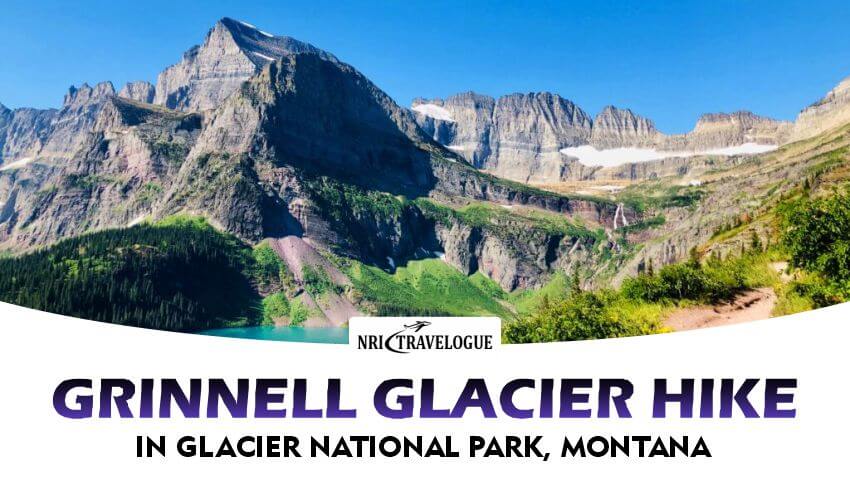Glacier National Park in Montana is a haven for outdoor enthusiasts, offering rugged peaks, pristine lakes, and trails that showcase the raw beauty of the American wilderness. Among its many treasures, the Grinnell Glacier Hike stands out as a must-do for travelers seeking breathtaking views and a chance to witness a glacier up close. This trail, nestled in the heart of the park, delivers a mix of challenging terrain, vibrant wildlife, and unforgettable scenery. Whether you’re an experienced hiker or a curious adventurer, this guide will walk you through what to expect on this iconic journey.
Why Choose the Grinnell Glacier Hike?
The Grinnell Glacier Hike is one of the most celebrated trails in Glacier National Park, and for good reason. Spanning approximately 10.6 miles round trip, it offers a moderate to strenuous challenge that rewards hikers with panoramic views of turquoise lakes, cascading waterfalls, and the towering Bearhat Mountain. The trail leads to the foot of Grinnell Glacier, one of the park’s few remaining glaciers, which is shrinking rapidly due to climate change. For travelers, this hike is not just a physical journey but a chance to connect with nature and witness a natural wonder that may not exist for future generations.
The trail is accessible from the Many Glacier area, a quieter section of the park that feels like a hidden gem compared to busier spots like Going-to-the-Sun Road. The hike’s popularity stems from its accessibility for day hikers and its ability to showcase the park’s diverse ecosystems, from dense forests to alpine meadows. It’s a bucket-list adventure for anyone visiting Montana.
Preparing for the Hike
Before setting out, proper preparation is key to a safe and enjoyable experience. The Grinnell Glacier Hike typically takes 5 to 7 hours to complete, depending on your pace and stops for photos or rest. The trail gains about 1,600 feet in elevation, so a reasonable level of fitness is recommended. Here’s what you need to know to get ready:
1. Gear and Supplies
Pack sturdy hiking boots with good traction, as the trail can be rocky and uneven in places. Layered clothing is essential, as weather in Glacier National Park can change quickly, especially at higher elevations. A lightweight rain jacket, hat, and sunglasses will protect you from sun, wind, or sudden showers. Bring a backpack with plenty of water (at least 2 liters per person), high-energy snacks, and a small first-aid kit. Bear spray is a must, as the Many Glacier area is home to both black and grizzly bears. Familiarize yourself with how to use it before you hit the trail.
2. Timing and Logistics
The best time to hike to Grinnell Glacier is from late June to early October, when the trail is mostly snow-free and accessible. July and August offer the warmest weather and vibrant wildflowers, but early fall provides stunning foliage and fewer crowds. Check trail conditions before you go, as snow or ice can linger at higher elevations. The trailhead is located near the Many Glacier Hotel, and parking can be limited, so arrive early—ideally before 8 a.m.—to secure a spot.
For those looking to shorten the hike, a boat shuttle across Swiftcurrent Lake and Lake Josephine can cut about 3.5 miles off the round-trip distance. The boat ride also adds a scenic element to the adventure, gliding past glacier-carved peaks reflected in crystal waters. Tickets for the shuttle can be purchased in advance, and it’s a great option for families or those wanting a less strenuous day.
The Trail Experience
The Grinnell Glacier Hike begins at the Swiftcurrent Lake trailhead, where you’ll follow a well-maintained path along the shores of Swiftcurrent Lake and Lake Josephine. The first couple of miles are relatively flat, winding through pine forests and offering glimpses of Bearhat Mountain’s iconic silhouette. This section is perfect for warming up and soaking in the serene beauty of the lakes, which often mirror the surrounding peaks on calm mornings.
1. The Ascent
After about 2 miles, the trail begins to climb steadily, transitioning from forest to open alpine terrain. The incline can feel challenging, but the views make every step worthwhile. You’ll pass through meadows dotted with wildflowers like Indian paintbrush and lupine, and the trail opens up to reveal sweeping vistas of the Many Glacier valley. Keep an eye out for wildlife—mountain goats, bighorn sheep, and marmots are common, and you might spot a bear foraging in the distance. Always maintain a safe distance from animals and follow park guidelines for wildlife encounters.
As you approach the final mile, the trail becomes steeper, with switchbacks leading to Grinnell Glacier Overlook. The effort is rewarded with your first glimpse of the glacier, a shimmering mass of ice nestled between rugged peaks. The turquoise waters of Upper Grinnell Lake, fed by glacial melt, create a striking contrast against the gray cliffs and blue sky.
2. At the Glacier
Reaching Grinnell Glacier feels like stepping into a postcard. The glacier itself, though smaller than it once was, remains a powerful reminder of the forces that shaped this landscape. You can relax on the rocky shores of Upper Grinnell Lake, enjoy a picnic, and take in the sight of icebergs floating in the water—a rare treat for hikers. The surrounding cliffs, including Salamander Glacier and Gem Glacier, add to the dramatic scenery. Spend some time exploring the area, but be mindful of your footing, as the rocks near the lake can be slippery.
Tips for a Memorable Hike
To make the most of your Grinnell Glacier Hike, keep these tips in mind:
1. Stay Safe
Glacier National Park is bear country, so hike in groups, make noise to avoid surprising wildlife, and keep bear spray accessible. Check weather forecasts before you go, as storms can roll in quickly. Let someone know your plans and expected return time, especially if hiking solo.
2. Capture the Moment
The trail is a photographer’s paradise, with opportunities to capture everything from macro shots of wildflowers to sweeping landscapes. A lightweight tripod or a phone with a good camera can help you document the journey. Early morning light is ideal for vibrant colors, especially around the lakes.
3. Leave No Trace
Pack out all trash, including food scraps, and stick to the trail to minimize your impact on the fragile alpine environment. Respecting the park’s natural beauty ensures it remains pristine for future visitors.
Why It’s Worth the Effort?
The Grinnell Glacier Hike is more than just a trail—it’s a journey through one of the most stunning landscapes in the United States. The combination of serene lakes, rugged peaks, and the chance to stand at the foot of a glacier makes it an unforgettable experience for travelers. Beyond the physical challenge, the hike offers a rare opportunity to connect with nature and reflect on the fleeting existence of glaciers in a warming world.
For those visiting Glacier National Park, this hike is a highlight that encapsulates the park’s wild beauty. Whether you’re drawn to the solitude of the trail, the thrill of spotting wildlife, or the awe of standing before a glacier, the Grinnell Glacier Hike delivers on every front. It’s a reminder of why we travel: to seek out places that stir the soul and leave us with stories to tell.
Planning Your Visit
If you’re adding the Grinnell Glacier Hike to your Glacier National Park itinerary, consider spending a few days in the Many Glacier area to explore other trails, like the Iceberg Lake Hike or the Ptarmigan Tunnel. Lodging options range from campgrounds to historic lodges, and nearby towns like St. Mary or Babb offer dining and supplies. Always check the park’s website for updates on trail conditions, closures, or shuttle schedules.
The Grinnell Glacier Hike is a testament to the power of nature and the joy of discovery. Lace up your boots, pack your sense of adventure, and set out to experience one of Montana’s most iconic trails. The glacier is waiting.
The full Grinnell Glacier hike is about 10.6 to 11 miles (17–18 km) round trip with an elevation gain of approximately 1,600–2,000 feet (490–610 m). It is considered strenuous due to the length and steep sections, especially near the end of the trail.
Yes. You can take boat shuttles across Swiftcurrent Lake and Lake Josephine, which shortens the hike to about 7.2 miles (11.6 km) round trip. This is a popular option for families or those seeking a less demanding trek.
The best time is mid-June through September, when the trail is free of snow and fully accessible. Before mid-July, some sections may remain snow-covered
The main trailhead is at the Many Glacier area of Glacier National Park, accessible from the Many Glacier Hotel or the Grinnell Glacier Trailhead. Arrive early, as parking fills up quickly, especially in peak season.
Yes. From July 1 to September 21, 2025, personal vehicles are restricted from entering the Many Glacier area due to construction. A hiker shuttle will be in operation during this period, and entry tickets may be required in summer.
Bring layers for warmth (it gets colder near the glacier), sturdy hiking shoes, water, snacks or lunch, sun protection, and rain gear. Always carry bear spray and follow wildlife safety guidelines.
Yes. Boat shuttle tickets must be booked in advance as they often sell out, especially in peak season. Visit the Glacier Park Boat Company website for schedules and reservations.









